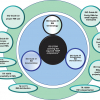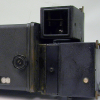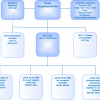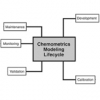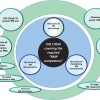Peter J. Jenks
the Jenks Partnership, Newhaven House, Junction Road, Alderbury, Salisbury, Wiltshire SP5 3AZ, UK
The provision of useful, reliable and possibly most importantly comparable data is generally considered to be the “product” that is delivered by a large proportion of analytical laboratories, especially commercial labs. The lab manager or quality manager carries the can: if he doesn’t satisfy his customers’ needs his job can be on the line. The way that labs ensure that their product meets the needs of their consumers has changed and evolved over the years: today the accreditation of a laboratory to EN-ISO 17025 standard is rapidly becoming the most popular means by which labs assure customers that their product is fit for purpose. To maintain this accreditation the lab must submit to (and pay for) regular surveillance visits by their national accreditation body.
But accreditation to ISO 17025 is a relatively new phenomena and it has still to gain universal acceptance. Almost all labs offering environmental and water analysis are accredited to this standard, but it is by no means universal in labs serving the pharmaceutical industry and few research labs are accredited. For almost 150 years the way that labs sought to demonstrate the delivery of reliable product was by following some form of standardised, proven method. The theory was, and in many areas of analytical science still is, that if the lab follows a recipe that has been tried and tested by many people and reviewed by experts then the result should be “good data”. Indeed many of the organisations that were brought together to produce these standard methods have become, as member organisations, the core communities that give identity to the profession of an analytical chemist.
Even where the standard setting bodies were not member organisations, they depended totally on the input freely given by legions of analytical chemists through working parties, committees and other such groups. So for more than a hundred years the analyst, through these bodies, has been able to feel part of a larger community and so access a vast body of knowledge, advice and wise council. Just as importantly the analyst has, through contribution to the development of standard methods, been able to take ownership of the methods he, or she, used on a daily basis and so have confidence in them.
It is worth taking a quick look at three such bodies, AOAC International, ASTM and the Royal Society of Chemistry. All three have global membership and their work is known and respected throughout the analytical community.
AOAC International started out life in 1884 as the Association of Official Agricultural Chemists, established under the auspices of the US Department of Agriculture (USDA), and charged with developing uniform methods of analysis for fertilisers. In 1885, a Convention establishing AOAC as an independent organisation was held in Philadelphia, PA, USA. Its membership was restricted to analytical chemists in US State and Federal Government positions, a membership requirement that remained for nearly 100 years. In 1965, to recognise the expansion of AOAC’s scope of interest beyond agricultural topics, the Association’s name was changed to the Association of Official Analytical Chemists. The Association moved towards independence from the US FDA, achieving this in 1979. At the same time membership by scientists from outside the United States grew as did non-official (non-government) scientists. Today, over 60% of AOAC International members work in industry laboratories. The membership of AOAC has always had a strong practical and participatory bias: its work includes developing standard methods, validating commercial test kits, organising scientific meetings and publishing books and guides.
ASTM International, formerly known as the American Society for Testing and Materials (ASTM), develops and delivers international standards. In 2001, the Society became known as ASTM International and today some 12,000 ASTM standards are used around the world to improve product quality, enhance safety, facilitate market access and trade, and build consumer confidence. ASTM was formed in 1898 by chemists and engineers from the Pennsylvania Railroad. At the time of its establishment, the organisation was known as the American Section of the International Association for Testing and Materials. ASTM shares many of the same characteristics as AOAC, the key is the spirit of membership and volunteerism that makes the development of methods possible.
The Royal Society of Chemistry, based in the UK but with a global membership, is the result of the merger and evolution of a number of bodies: first was the Chemical Society of London established in 1841, stimulated by an increasing interest in scientific matters. One of its aims was to hold meetings “ ... for the communication and discussion of discoveries and observations, an account of which shall be published by the Society in the form of Proceedings or Transactions”.
The Society of Public Analysts, was formed in 1874 charged with improving the science of analytical chemistry, in those days the “Public Analyst” was the only commercial, for service analytical laboratory available in most parts of the United Kingdom. The Society subsequently became The Society for Analytical Chemistry.
Pressures from within the Chemical Society to respond to the need for properly qualified chemists led to the formation in 1877 of another new body, the Institute of Chemistry of Great Britain, which subsequently became the Royal Institute of Chemistry. Its role was to focus on qualifications and professional status with its main aims being to work towards the advancement of the profession of chemistry and to ensure that consulting and analytical chemists were thoroughly and properly qualified in chemistry and its application.
In 1972, the Chemical Society and the Royal Institute of Chemistry, together with the Faraday Society and the Society for Analytical Chemistry, took the first steps towards merger which was completed. In 1980 when the four separate bodies became The Royal Society of Chemistry, with a new Royal Charter and the dual role of learned society and professional body. Today the RSC is actively involved in education, qualifications and professional conduct. It runs conferences and meetings at both national and local level. It is a major publisher, and is internationally regarded as a provider of chemical databases. Although like AOAC and ASTM there is a professional staff and management, the vast majority of its work is undertaken by its members, working through committees and communities.
So what change has the rise of accreditation to ISO standards brought? There is a fundamental difference in the way ISO develops standards, when compared to the member organisations. The core standard, 17025, depends on associated standards and guides, ISO Guides 30 to 35 (Certified Reference Materials) and ISO Standard 17043 (Proficiency Testing) has effectively becomes the “master standard” for analytical chemists. The International Standards Organisation (ISO), the international body responsible for these standards, is about as far from a member organisation as it is possible to be. ISO REMCO, which is responsible for developing the guides that detail how reference materials should be developed, certified and used is a committee made up delegates from national metrology organisations and other related bodies. So what is the role of the analytical chemist in the development of these standards? In reality the practicing chemist has little or no say in the development of the various guides and standards. The result is that because there is no sense of ownership the lab chemist seems to feel little affinity for them. It is no exaggeration to say that in some industries lab chemists and quality managers feel that the Accreditation Bodies have become effectively arms of Government that regulate a service, almost Police like. All this is a far cry from the aims of AOAC, ASTM and the RSC which were to promote good science.
This unfortunate consequence is that the lab manager, working in a commercial “fee for service” laboratory is becoming more and more disenfranchised from the tools he or she depends on to deliver their “product”. There is an almost “ivory tower” no-compromise mentality that seems to pervade ISO, born I suspect by the lack of involvement of scientists from commercial laboratories in the workings of both ISO REMCO and the National Standards Organisations that supply members to ISO REMCO. This mentality is slowly permeating the accreditation bodies that enforce the various ISO Standards. The result is that the lab manager can start to wonder who is running things. A good example is the growing pressure from accreditation bodies to use reference materials supplied from ISO 17025 + Guide 34 producers, if one is available. The UKAS document TPS 57 is a good example: a copy can be downloaded here: http://www.ukas.com/library/Technical-Information/Pubs-Technical-Articles/Pubs-List/TPS%2057_March2011.pdf
The reasoning behind this pressure for strict compliance to an ISO Standard is logical, but the consequences can be commercially questionable, if not unsound. This author, and many other scientists, are starting to question the commercial viability of all this regulation: it has been said to me more than once that the quality improvements that have been achieved through accreditation have resulted in lab data that is beyond fit for purpose.
Have you an experience you’d like to share? Let me know through the commenting facility below.


